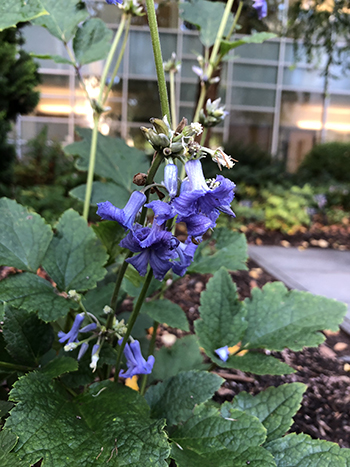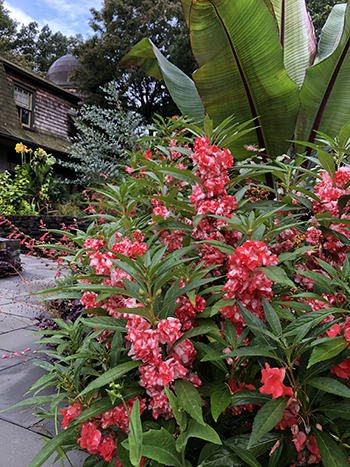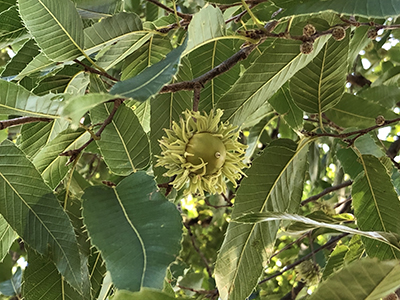
Plants of the Week: Sept. 14

Clematis tubulosa (bush clematis) is a non-climbing clematis, perfect for intermingling with other small shrubs and perennials. The fragrant blue-purple hyacinth-like flowers appear in late summer followed by fluffy seed heads. Clematis tubulosa prefers full sun to partial shade and is black walnut tolerant! A grouping is planted in the Harry Wood Garden. Photo credit: J. Coceano

Impatiens balsamina ‘Peppermint Stick’ (balsam impatiens) is a colorful cultivar bearing candy apple red and bright white mottled flowers. Balsam impatiens were a constant in Victorian seed catalogs. The double flowering varieties, called “camellia flowered” were especially sought after. The plants fell out of favor and many varieties were lost. ‘Peppermint Stick’ reaches 2’ in height with a smaller spread and is growing in the Scott Entrance Garden. Incredibly easy to start from seed, plants ask only for heat, sunshine, and constant moisture. Like zinnias and cosmos, balsam impatiens add pops of color to the summer and early fall garden. Photo credit: J. Coceano

Oak trees are majestic! While I gravitate toward members of the white oak group, bur oak, and post oak being two of my favorites, I am always drawn to Quercus acutissima (sawtooth oak). The glossy leaves and sea urchin-like cupule are so charismatic. This species, native to Asia, has been planted for its vigor and adaptability. The Pennsylvania Department of Conservation and Natural Resources has added Quercus acutissima to its “watch” category. A watch ranking means that such species are “problems in surrounding states but have not been widely reported in Pennsylvania, OR may naturalize and become a problem in the future and require more monitoring.” Three specimens are planted in the interior of the arboretum. While we have not observed any seeding into the woods, we remain vigilant. The Field Guide to Native Oak Species of Eastern North America is a great online resource for those interested in native oaks. Photo credit: J. Coceano





No Comments